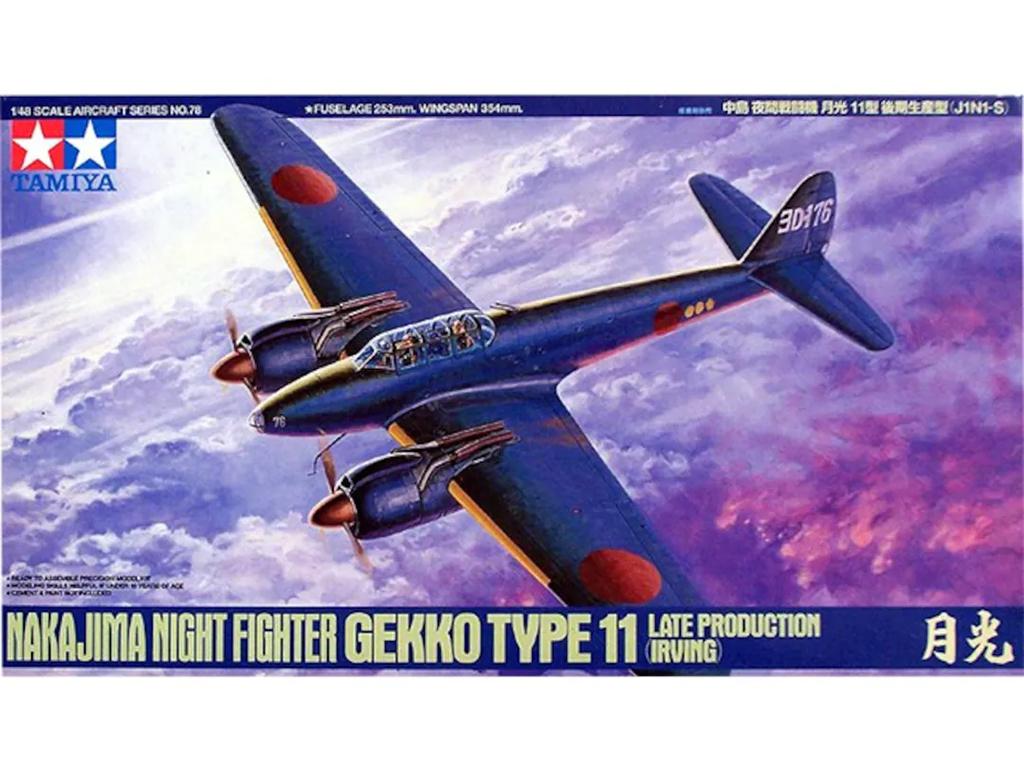
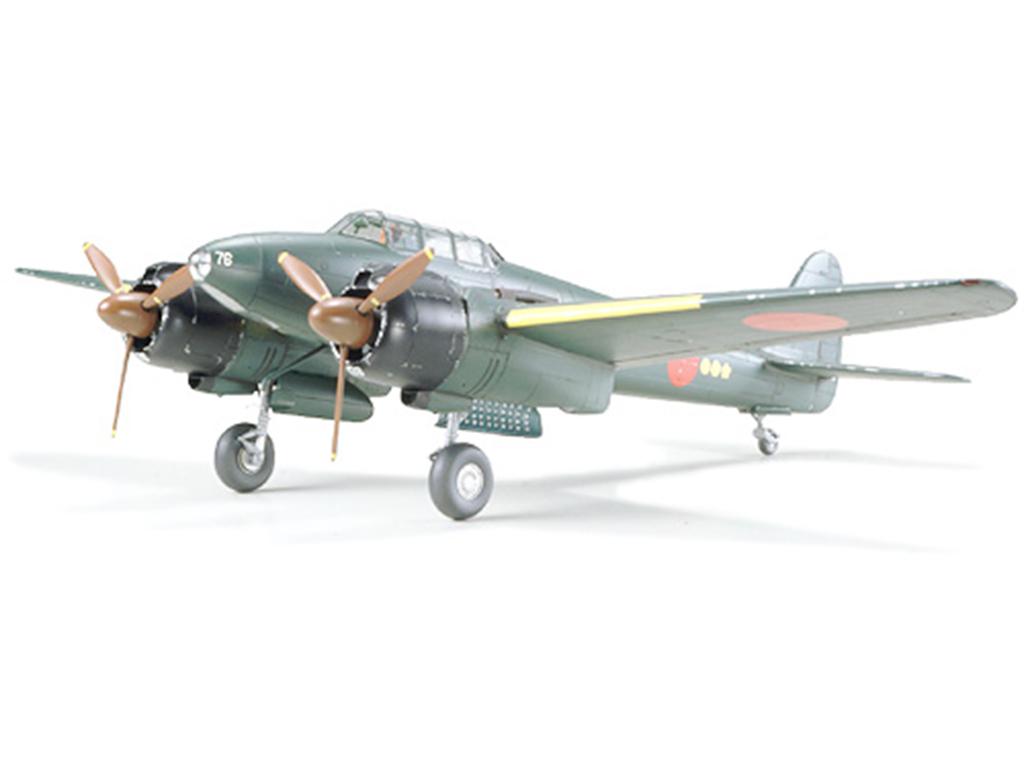
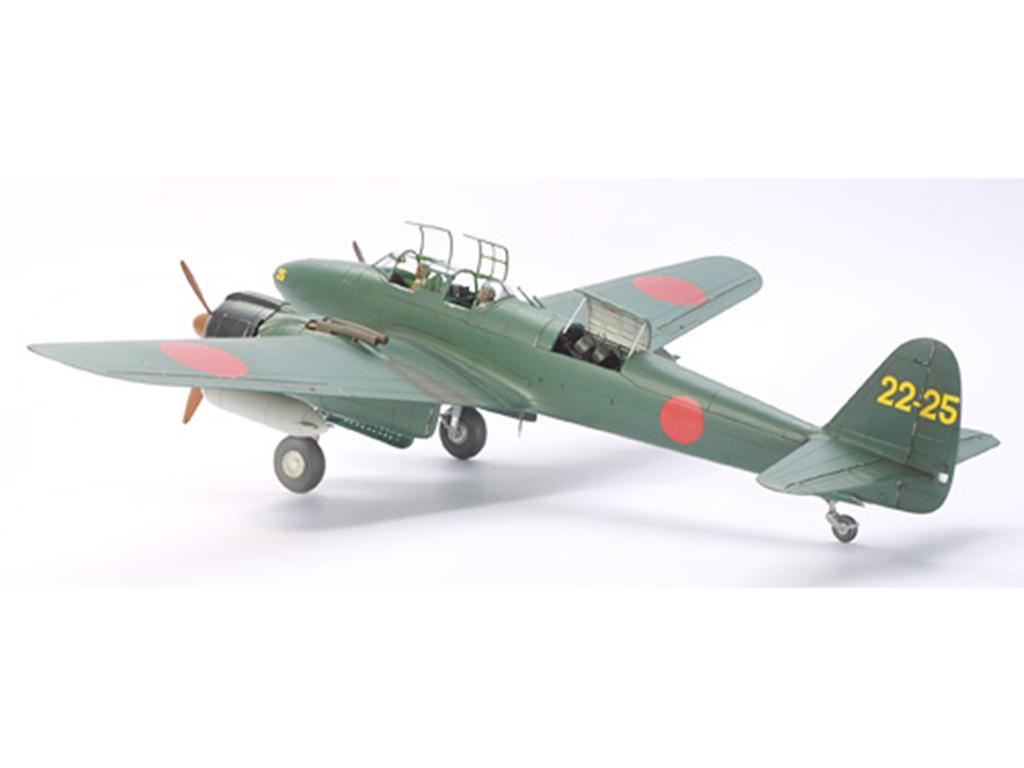
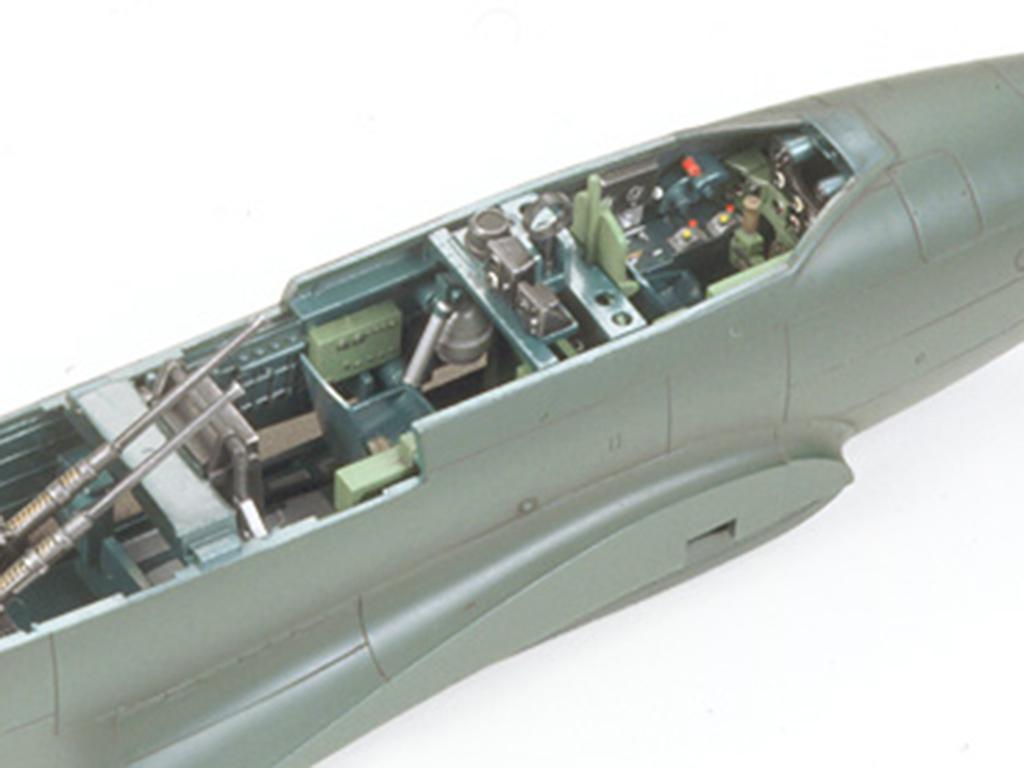
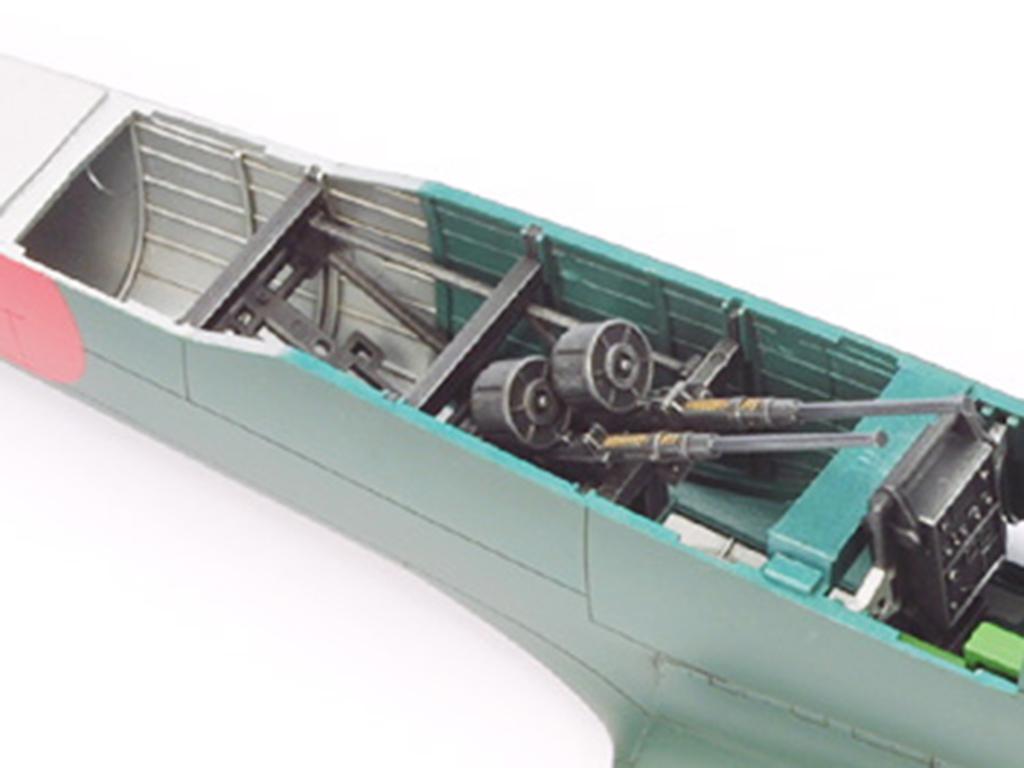
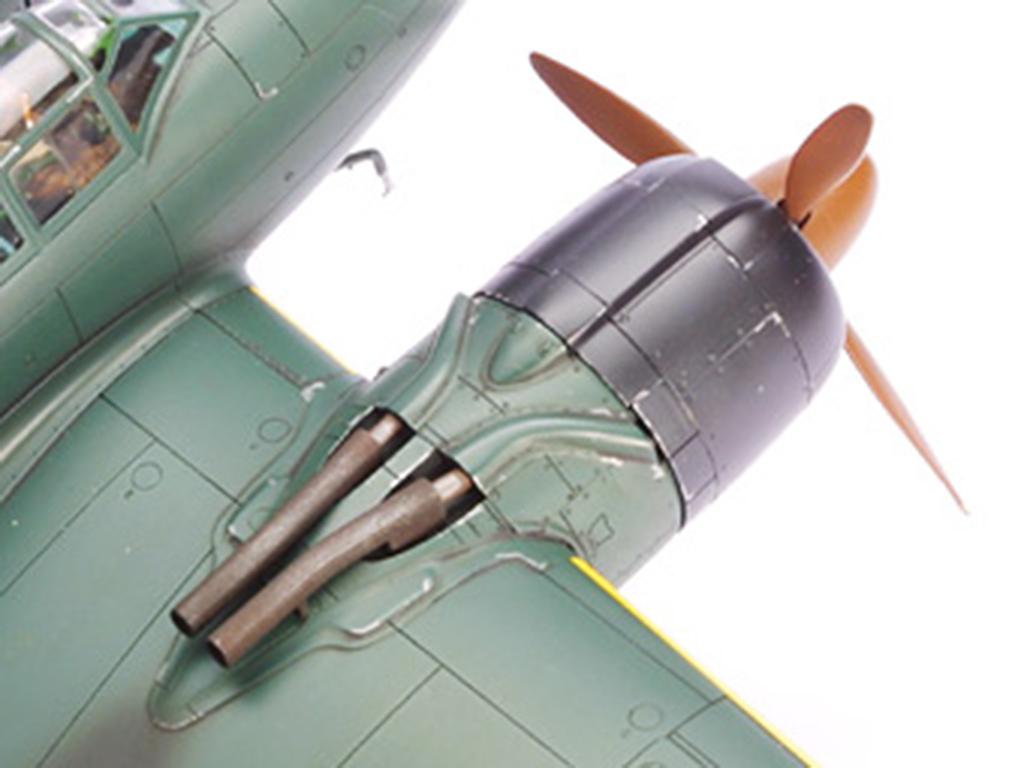
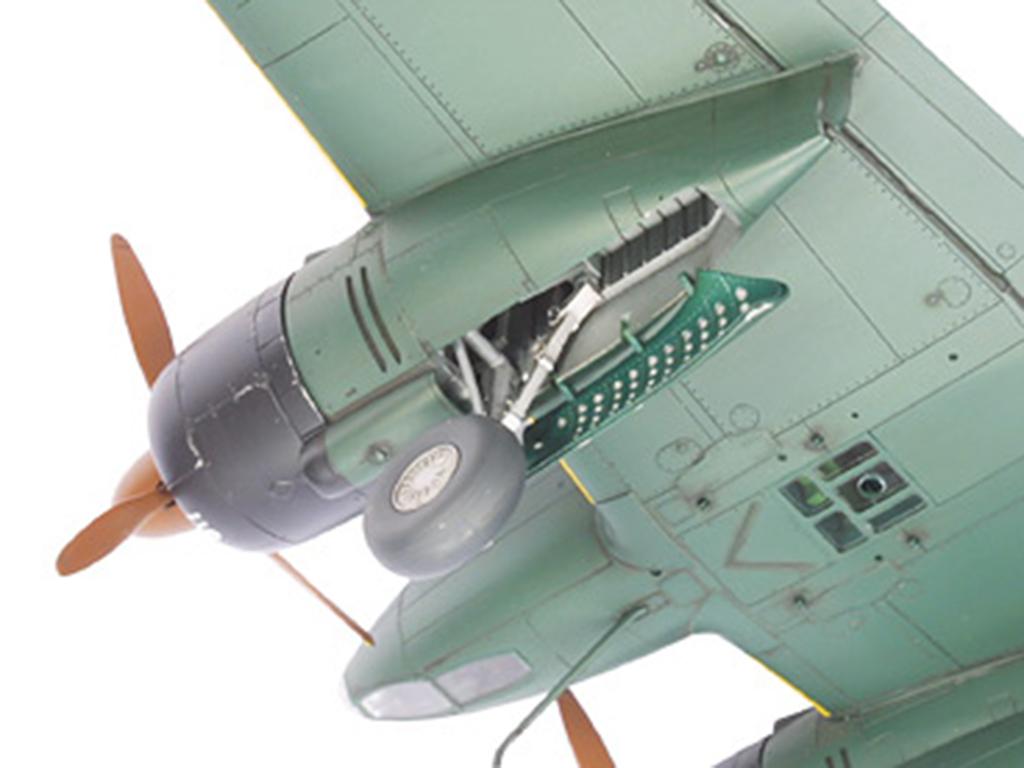







Ref.: TAMI-61078

Nakajima Night Fighter Gekko Type 11 Late Production (Irving)
It was to be another long-range harassment of the Japanese outpost of Rabaul, New Britain Island. In the early hours of May 21, 1943, the B-17 Flying Fortresses of the 43d Bombardment Group moved inland, putting themselves in range of Japanese fighters. The gunners scanned the darkness of the night sky for enemy aircraft, but it seemed clear. Then, just before the bomb run could begin, enemy fire pierced the underbelly of the bomber and struck the engines, sending the B-17 crashing into the sea. The fatal shots came from the 20mm guns of fixed-angle, oblique-firing system mounted on a Japanese "Gekko" (Moonlight) night fighter, that the US would later name, "Irving". Its development goes back to 1938, when the Japanese Navy was planning a twin-engine fighter to support its long-range bombers. The aircraft was required to be capable of higher speeds and longer range than the "Zero", and equal to it in terms of maneuverability. The Nakajima Company brought forward a prototype, the 13-Shi Twin-engine Land-Based Fighter (J1N1), which used two 1000hp "Sakae" engines, one on each of its sturdy main wings. Since it proved inferior to single-engine fighters of the time, it was adopted as a Type 2 Land-based Reconnaissance Aircraft (J1N1-R). However, the need to counter the nocturnal B-17 bombers in the Southwest Pacific led to its conversion into a night-fighter. This transformation came about by positioning the armaments to fire at an oblique angle from the line of flight, allowing the fighters to swiftly strike the bombers while maintaining a parallel course and speed with a target either above or below.